Protests In U.S. To Coronavirus Restrictions Could Be Catalyst For Economic Change (#GotBitcoin?)
Never Let A Good Crisis Go To Waste. Protests In U.S. To Coronavirus Restrictions Could Be Catalyst For Economic Change (#GotBitcoin?)
Flag-waving protesters gathered outside government buildings nationwide to voice their anger at stay-home orders.
Protesters in Lexington, Ky., had a different perspective, reportedly shouting loudly enough to be heard inside the Capitol. In Lansing, Mich., demonstrators took to the streets, snarling traffic as part of an “Operation Gridlock” rally.
Most of the protesters reportedly stayed in their cars, though others ventured onto the sidewalk and stood close together, disregarding social distancing.
“I support your right to free speech and I respect your opinions,” Whitmer said during a news conference. “I just urge you, don’t put yourself at risk and don’t put others at risk either … we know that this rally endangered people.”
The daily flood of statistics related to the COVID-19 pandemic, a compendium of numbers both promising and ominous, triggered starkly different reactions in different parts of the nation on Wednesday.
The situation in New York City suggests that making sense of coronavirus statistics can be difficult. This week, the city’s official death toll rose dramatically when health authorities began including people who may have had COVID-19 but died without being tested.
Updated: 4-17-2020
Fed Up With Staying Home, Some Americans Protest
Protests pop up from Virginia to Michigan as citizens, worried about their jobs and businesses, call for easing of coronavirus restrictions.
Americans impatient with continuing stay-at-home orders and other coronavirus-related restrictions have descended on several statehouses this week to clamor for governors to ease up and reopen the economy.
Some of the governors have rebuked the demonstrators, including in Kentucky, where Democratic Gov. Andy Beshear said during a briefing that reopening the state immediately “would absolutely kill people.”
The protests came as a record-shattering 22 million workers have sought unemployment benefits during a month of coronavirus-related shutdowns, and many employees and business owners have grown frustrated with forced shutdowns of businesses, especially those that don’t require large gatherings.
“Keeping people locked in their homes to save lives is going to collapse the economy, which is also going to cost lives,” Matt Seely, a volunteer with the Michigan Conservative Coalition, a group that helped organize a large protest in Lansing on Wednesday, said in an interview.
The events have ranged from the raucous rally in Lansing, which drew more than 3,000 people by police estimates, to a quiet picnic Thursday in Richmond, Va., that 40 people attended before authorities closed the gates to the square outside the state Capitol building.
In Raleigh, N.C., where about 100 people gathered Tuesday, police charged a 51-year-old woman with violating an executive order that limits gatherings to 10 people, a misdemeanor. The woman was given multiple opportunities to comply with the order “but chose not to do so,” said a spokesman for the state Department of Public Safety.
In Lansing, people protested Democratic Gov. Gretchen Whitmer’s recent order expanding stay-at-home restrictions. They blocked traffic around the Capitol, and some protesters stood with guns a few feet from each other outside the building. Some chanted, “Lock her up!”
Ms. Whitmer had recently announced an extension of a state of emergency until the end of April. New measures include limiting the number of shoppers depending on the size of a store. One provision orders certain stores to close off some sections, including those for gardening supplies, saying they are nonessential, prompting the state’s greenhouse industry to say it will be devastated by the move.
The Facebook page for the protest, dubbed “Operation Gridlock,” listed as hosts the Michigan Conservative Coalition and Michigan Freedom Fund, a conservative advocacy group. Organizers of the protests said Ms. Whitmer’s action was a government overreach.
Tiffany Brown, a spokeswoman for Ms. Whitmer, said the governor supports the right to protest but that participants shouldn’t put themselves or others at risk.
“It is disappointing to see people congregating without masks, and without practicing social distancing,” she said in a statement. “This kind of activity will put more people at risk, and it could mean that more people will die.”
The Michigan Freedom Fund, which has backing from the DeVos family, wasn’t the main organizer, but did spend $250 advertising the event on Facebook, said Tony Daunt, the group’s executive director, in an interview Thursday. Mr. Daunt said his group was listed as a host on the Facebook page because it had advertised the event, but that the Michigan Conservative Coalition was the lead organizer.
The DeVos family, which includes Education Secretary Betsy DeVos, are prominent conservative donors. They have donated to the group, but weren’t involved with the protest held Wednesday, said Nick Wasmiller, a spokesman for the family. Most demonstrators stayed in their vehicles, but about 150 people were on foot, the Michigan State Police said. One attendee, a 45-year-old man, was arrested for simple assault against another protester.
Mr. Seely said the organizers of the protest urged attendees to practice social distancing. “It is only this group of jerks that descended on the steps to the Capitol and on the lawn,” he said.
In Kentucky, demonstrators carried homemade signs and American flags while chanting slogans like “Facts over fear” and “We want to work” outside the state Capitol in Frankfort.
Erika Calihan said she helped organize Wednesday’s protest by posting on Facebook that she planned to take her children to the Capitol. She said many people practiced social distancing, though there were also family members who clustered together.
Ms. Calihan, who estimated hundreds of people turned out, said Mr. Beshear, by keeping the state largely shut down, “is looking out for a very small percentage of Kentuckians, rather than looking out for all Kentuckians.”
“We’re not sure why we can’t operate just like the big businesses and put in safety precautions, and thereby potentially protect people and at the same time make a living,” said Ms. Calihan, whose husband is a small-business owner.
“If people are frightened,” she said, “they can choose to stay at home.”
Protesters’ chants and a horn could be heard as Mr. Beshear updated the public on the pandemic, including news that seven more state residents had died of Covid-19, the disease caused by the new coronavirus.
“Everybody should be able to express their opinion,” the governor said. “They believe we should reopen Kentucky immediately, right now. Folks, that would kill people.”
Thursday’s picnic in Richmond was organized by three groups including Reopen Virginia, which was formed Sunday and grew out of Facebook discussions, said organizer Markie Kelly. The group’s Facebook page has 19,000 members with 10,000 requests pending, she said.
“It is one thing to say there is a virus out there and it has put this amount of people in the hospital and this amount of people have died from it. It is another thing to say ‘stay home, do not leave your house, you cannot work if you’re this type of business,’” said Ms. Kelly, a 31-year-old stay-at-home mother.
Democratic Gov. Ralph Northam on Wednesday said he would extend until May 8 an emergency order that bans crowds of more than 10 people; closes recreation, entertainment and personal-care businesses; and limits restaurants to takeout and delivery.
“Gov. Northam will continue to make decisions based in science, data and public health,” a spokeswoman for the governor said.
A Virginia Capitol Police spokesman said police were alarmed by a Facebook notice for the picnic because it said “hugging, closeness and sharing of dishes is encouraged.”
Ms. Kelly defended the choice of words. “We didn’t say you have to do this, but yeah, if people want to hug each other, let them do it,” she said.
After about 40 people had arrived, police closed the gate to Capitol Square, said the police spokesman, Joe Macenka.
“We then went over to the group and asked them if they could please try and maintain safe social-distancing practice,” he said. “They did that, so we left them alone at that point.”
Updated: 4-19-2020
More Americans Fear Lifting Coronavirus Restrictions Too Soon, WSJ/NBC Poll Says
Nearly 60% of respondents worry that lifting stay-at-home orders quickly will fuel the pandemic.
Americans are worried about lifting stay-at-home orders too quickly amid the coronavirus pandemic, which has dramatically upended life in a month marked by business shutdowns, job losses and illness, according to a new Wall Street Journal/NBC News poll.
Nearly six in 10 in the survey said they were concerned that the country would move too fast to loosen restrictions aimed at slowing the outbreak, compared with about three in 10 who said the greater worry was the economic impact of waiting too long.
What worries you more, that the U.S. will move too quickly in loosening restrictions or take too long?
Views on when to reopen split along partisan lines, with 77% of Democrats expressing concern about opening too quickly, compared with 39% of Republicans. By contrast, 48% of Republicans are worried the U.S. will take too long, compared with 19% of Democrats. President Trump has expressed an eagerness to lift restrictions as soon as possible, though he also has laid out public-health guidelines for governors to follow as they decide when to lift constraints.
The survey of 900 registered voters also revealed more anxiety over the virus, compared with a similar poll in March.
Nearly three-quarters of respondents said they were very or somewhat worried about themselves or a family member catching the virus, up from about half in March. And 40% said they personally knew someone who had been infected.
A total of 76% of respondents ranked the economy as fair or poor, compared with about half in March. Only 22% in the new survey described the economy as in good shape.
Meanwhile, more than three-quarters said the outbreak had changed their lives in major ways, including not being able to see family or friends and feeling anxious about grocery shopping. In March, one-quarter said there had been major changes to their lives.
“Simply put: We are in it now,” said Democratic pollster Jeff Horwitt, who conducted the survey with Republican Bill McInturff. “The coronavirus has hit America like a series of tornadoes that won’t go away.”
For Mr. Trump, the poll indicated the pandemic hasn’t significantly altered his job-approval rating as he campaigns for re-election. His rating was unchanged from March, with 46% approving and 51% disapproving. In a head-to-head matchup with Joe Biden, 49% said they would support the presumptive Democratic nominee and 42% said they would support Mr. Trump, little changed from Mr. Biden’s 9-point lead in March.
Also, just 36% said they trust what the president says about coronavirus, while 52% don’t. In contrast, 66% said they trust their governor and 60% said they trust National Institute of Allergy and Infectious Diseases director Dr. Anthony Fauci.
“President Trump faces some tough sledding ahead,” said Peter Hart, a Democratic pollster who worked on the survey. He said the results suggested that Mr. Trump was vulnerable to being blamed by the public if the situation deteriorates.
About six in 10 voters in the survey approved of the federal government taking an expanded role in the economy, which has included providing trillions of dollars in stimulus. At the same time, 48% expressed concern that the U.S. was spending too much and would drive up the deficit, while 40% said the bigger concern was that the government would spend too little and prolong the economic downturn.
Republicans were particularly concerned about spending, with 60% worried that the government would spend too much, compared with 29% who worried about too little spending. Among Democrats, those shares were essentially reversed.
Also, more than six in 10 said they weren’t satisfied with the federal government’s efforts to provide medical equipment to health-care workers or ensure sufficient testing to determine how far the virus has spread.
While concerns about the virus were on the rise, most voters in the survey didn’t see the pandemic as more significant than other major historical events, such as the Sept. 11 terrorist attacks or the attack on Pearl Harbor. Some 47% said the global virus outbreak was very important but not more significant than those events, while 38% said it was the most significant. Others said it was somewhat or not important.
Comparing the likely presidential candidates, voters by a 9-point margin said they thought Mr. Biden would be better able to handle a crisis than Mr. Trump, and by a 9-point margin they said Mr. Biden would be better at responding to the coronavirus. But voters said Mr. Trump would be better at dealing with the economy, by 47% to 36%.
Views of Mr. Biden were more unfavorable than favorable, with 37% viewing him positively and 41% negatively, unchanged from March. Voters view Mr. Trump in a slightly less favorable light than they do Mr. Biden, with 41% viewing the president positively and 51% negatively.
Poll participant Shad Granius, a 48-year-old bartender from Sturgeon Bay, Wis., said he was worried about what’s ahead, because he can’t “see myself going back to work any time in the future.”
A self-described independent, Mr. Granius said he supported Democrat Hillary Clinton in 2016 and plans to back Mr. Biden in the fall election, saying “I think he’s got a cooler head.”
Kevin Kennedy, 57, of Conshohocken, Pa., said his house-painting work had halted until restrictions were lifted. But he said he was happy with how Mr. Trump had handled things so far.
“He’s probably doing the best he can. He’s probably getting conflicting information from both sides,” said Mr. Kennedy. He said he supported Mr. Trump in 2016 and plans to do so again.
Mr. Kennedy also predicted that recovery wouldn’t be quick, saying “I think it’s going to take a long time, but I think it will be a slow, steady thing.”
The Journal/NBC News poll was conducted April 13-15. The margin of error was plus or minus 3.3 percentage points.
Updated: 4-19-2020
How The Coronavirus Might Reduce Income Inequality
The Black Death and other pandemics pushed wages higher, but the impact will likely be different this time, economists say.
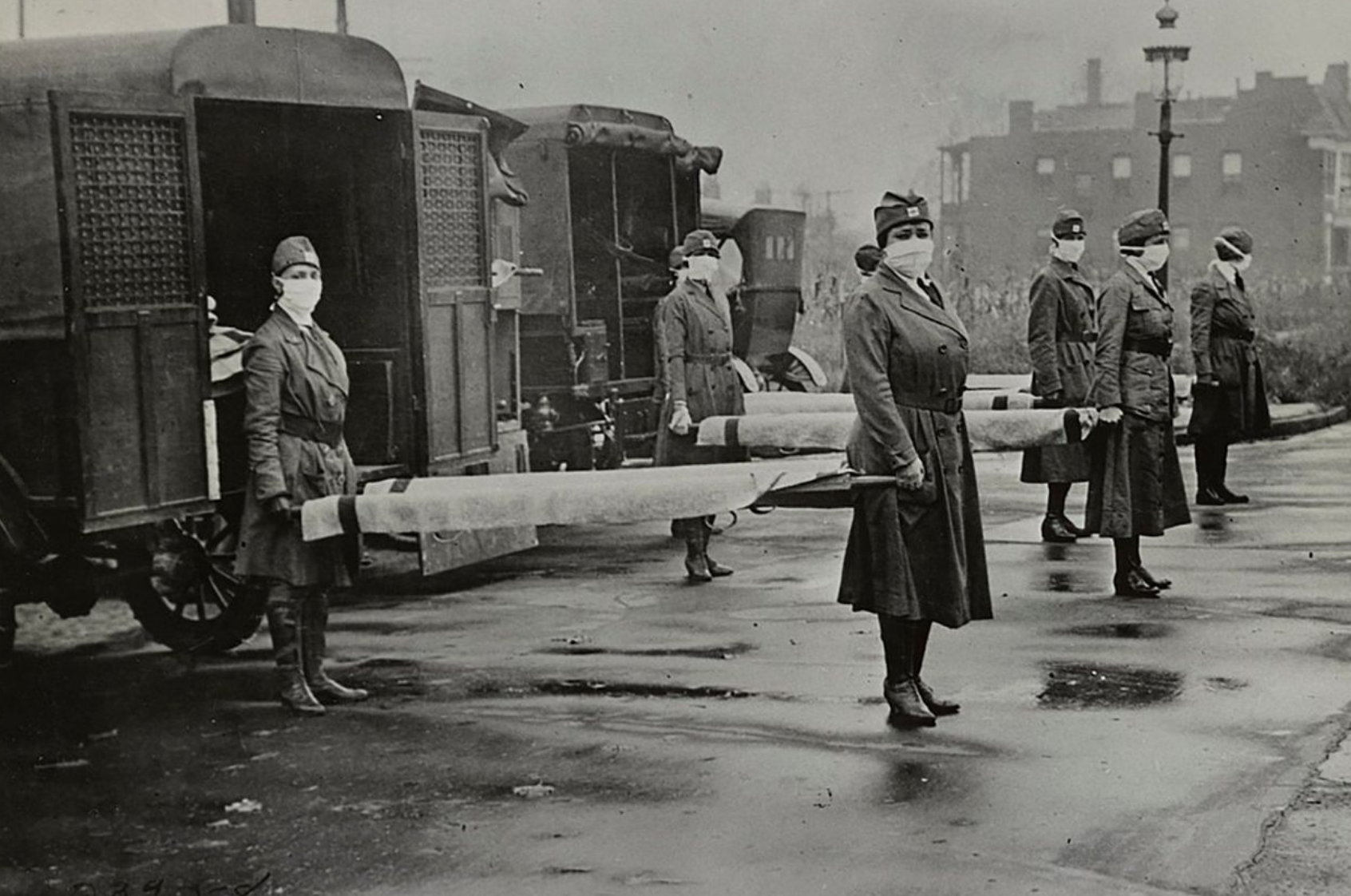
Economic historians have long thought that the Black Death, among other pandemics, had a significant impact on how income is shared between those who own land and other assets and those who provide the labor.
The most direct and brutal way in which that impact is felt is a change in the supply of labor. Viruses and bacteria kill workers, who become less plentiful as a result. For those who survive, wages rise. At the same time, land and other assets are unscathed, and the returns to their owners decline. The result is a more equal distribution of incomes.
The Black Death, a bacterial infection that devastated populations in Europe and Asia in the mid-14th century, is the most widely studied of past pandemics. The full extent of its consequences are still debated, but it almost certainly resulted in higher wages for workers in northwestern Europe.
Higher wages also may have inspired a search for ways to boost productivity and save on labor costs, eventually giving rise to the Great Divergence, a period when incomes in the West surged ahead of those in the rest of the world. Examples included substituting horses for oxen as a source of agricultural power and moving from cultivating grains to raising sheep for wool.
The Black Death wasn’t the only pandemic to have had a long-lasting economic impact. In a paper published this month by the National Bureau of Economic Research, three economists examined 15 outbreaks that each accounted for more than 100,000 deaths, the most fatal being the Spanish flu, which took an estimated 100 million lives between 1918 and 1920.
They found that real wages typically rose for three decades after an outbreak, by as much as 5% at their peak. Over that same period, the natural rate of interest—a measure of the return on capital—declined by one-and-a-half percentage points. Overall, pandemics narrowed the income gap between workers and owners of capital.
The current viral outbreak has already claimed more than 150,000 lives, and that total will rise. Had the pandemic been left unchecked, the toll would be a great deal larger, and its impact on inequality likely similar to that of previous pandemics.
But this time, governments around the world have taken unprecedented steps to halt the virus’s spread, shutting down large parts of the global economy to save lives. Those measures have limited the impact on the working-age population, as has the tendency of Covid-19 to kill older people who may have already retired while often sparing the lives of the working age or younger.

That is why Stanford University historian Walter Scheidel doesn’t expect to see an impact on wages. “The upcoming workforce is least affected, so we can’t expect a shortage of labor,” said Mr. Scheidel, whose 2017 book, “The Great Leveler,” examined the drivers of inequality since the Stone Age.
That’s also the view of Òscar Jordà, an economist at the Federal Reserve Bank of San Francisco and one of the authors of the National Bureau paper.
“I do not expect wages to respond as in previous pandemics,” he wrote in reply to an emailed question.
That’s not to say that the pandemic will have no impact at all on inequality. Having experienced two major economic crises since 2007, people are likely to save more, which would push down returns on capital. On the other hand, governments will borrow more to finance emergency spending, which would tend to raise interest rates as the demand for credit increases. Overall, Mr. Jordà expects returns to fall slightly, potentially narrowing the income gap.
“The increase in private saving can be undone to some extent by public dissaving,” Mr. Jordà wrote. “Governments are racking up debt quickly—as they should in this time of crisis—and that will be another factor pushing on the real natural rate. On net, I still expect a slight decline.”
And there may be more jobs in some advanced economies that choose to bring the production of drugs, medical equipment and other essential goods back from overseas. At the same time, less international trade will mean slower global growth.
“Some offshore jobs will return,” said Angus Deaton, a professor of economics at Princeton University. “There’ll be more diverse sources of key materials and medicines. Some of this would bring lower levels of GDP, and lower income inequality because some of the less educated people get jobs again.“
One key question for the future of income inequality is how the buildup in government debt will be reversed. In the aftermath of World War II, many countries raised taxes on the wealthy, reducing income inequality. That wasn’t the approach taken after the global financial crisis after 2008.
There are other ways catastrophes such as pandemics and wars reshape income structures, exemplified most of all by the Russian Revolution. People can and will make a judgment about how their system of government coped with the challenge and whether it needs to change.
Stanford University’s Mr. Scheidel thinks that is the most likely way the new coronavirus will alter income inequality, even if he doesn’t think much will actually change.
“If political preferences shift enough, it can result in transformative change,” he said. “The current interventions have been sold as saving our economies and our societies, but they’re also aimed at saving the existing order. If they fail, we could see significant change.”
Updated: 4-19-2020
Nations Offer A Wide Mix Of Solutions As Tensions Mount Over Coronavirus Lockdown Restrictions
The global health crisis is taking a nasty political turn with tensions worsening between governments locked down to keep the coronavirus at bay and people yearning to restart stalled economies and forestall fears of a depression.
Protesters worrying about their livelihoods and bucking infringements on their freedom have taken to the streets in some places. A few countries are acting to ease restrictions, but most of the world remains unified in insisting it’s much too early to take more aggressive steps.
In the United States, there is clear evidence of the mounting pressure. The Trump administration says parts of the nation are ready to begin a gradual return to normalcy. Yet some state leaders say their response to the pandemic is hindered by a woefully inadequate federal response.
After insisting the country’s virus testing system was without fault, President Donald Trump announced Sunday evening that he would be using the Defense Production Act to compel increased manufacturing of testing swabs — one of several products governors have been begging the president to help them acquire. White House officials will also be holding a call Monday with the nation’s governors to help walk them through where to find supplies, he said.
Trump also remained defensive, however, vowing that there were enough swabs to go around. “Swabs are easy,” the president said, bringing one to his news briefing and waving it in front of reporters.
That came hours after Washington state’s Democratic governor, Jay Inslee, accused Trump of encouraging insubordination and “illegal activity” by goading protesters who flouted shelter-in-place rules his own administration has encouraged.
“To have an American president to encourage people to violate the law, I can’t remember any time during my time in America where we have seen such a thing,” Inslee told ABC’s “This Week.” He said it was ”dangerous because it can inspire people to ignore things that actually can save their lives.”
Trump supporters in several states have ignored social distancing and stay-at-home orders, gathering to demand that governors lift controls on public activity. The largest protest drew thousands to Lansing, Mich., on Wednesday, and others have featured hundreds in several states. The president has invoked their rallying cry, calling on some states with Democratic governors to “LIBERATE,” and he defended the demonstrations Sunday night, saying “these people love our country. They want to go back to work.”
Inslee likened Trump’s response to “schizophrenia.” Larry Hogan, the Republican governor of Maryland, said it “just doesn’t make any sense.”
“We’re sending completely conflicting messages out to the governors and to the people, as if we should ignore federal policy and federal recommendations,” Hogan said on CNN’s “State of the Union.”
Shutdowns have disrupted economic, social, cultural and religious life and plunged the world into a deep economic slump unseen since the Great Depression. Tens of millions of workers have lost their jobs and millions more fear they’ll be next.
With the arc of infection different in every nation and across U.S. states, proposals have differed for coping with the virus that has killed more than 165,000.
China, where the pandemic began, has lifted travel and other restrictions, but customer traffic has been slow to return.
Germany is enforcing social distancing but on Monday intends to begin allowing some small stores, like those selling furniture and baby goods, to reopen. Spain said children can leave their homes beginning April 27. Albania planned to let its mining and oil industries reopen Monday, along with hundreds of businesses.
The death toll in the U.S. was near 41,000 with more than 758,000 confirmed infections, while the global total has surpassed 2.4 million, according to a tally by Johns Hopkins University. The European Center for Disease Control said the continent now has more than 1 million confirmed cases and almost 100,000 deaths from the coronavirus.
The true figures are likely significantly higher since mild infections can be missed, testing is limited and many countries have been too overwhelmed by illnesses to effectively count them or have tried to underplay the extent of their outbreaks.
The International Monetary Fund expects the global economy to contract 3% this year. That’s a far bigger loss than 2009′s 0.1% after the global financial crisis. Still, many governments are resisting pressures to abruptly relax lockdowns.
“We must not let down our guard until the last confirmed patient is recovered,” said South Korea’s President Moon Jae-in.
In Britain, which reported 596 more coronavirus-related hospital deaths on Sunday, officials also said they’re not ready to ease efforts to curb the virus’s spread. U.K. minister Michael Gove told the BBC that pubs and restaurants “will be among the last” to leave the lockdown, which is now in place until May 7.
France’s health agency urged the public to stick to social distancing measures that have been extended until at least May 11 and Prime Minister Edouard Philippe said people could be required to wear masks on public transportation, and suggested no one plan faraway summer vacations even after that.
Trump is pushing to begin easing the U.S. lockdown in some states even before his own May 1 deadline, a plan that health experts and governors from both parties say will require a dramatic increase in testing capacity. But Vice President Mike Pence insisted the country has “sufficient testing today” for states to begin working toward the initial phases of reopening their economies.
California Gov. Gavin Newsom, a Democrat, said his state can’t begin lifting restrictions until it is able to test more people daily. “Right now, we’re not even close as a nation, let alone as a state, to where we should be on testing,” he said.
Protests In U.S. To,Protests In U.S. To,Protests In U.S. To,Protests In U.S. To,Protests In U.S. To,Protests In U.S. To,Protests In U.S. To,Protests In U.S. To,Protests In U.S. To,Protests In U.S. To,Protests In U.S. To,Protests In U.S. To,Protests In U.S. To,Protests In U.S. To,Protests In U.S. To,Protests In U.S. To,Protests In U.S. To,Protests In U.S. To,Protests In U.S. To,Protests In U.S. To,Protests In U.S. To,Protests In U.S. To,Protests In U.S. To,Protests In U.S. To,Protests In U.S. To,Protests In U.S. To,Protests In U.S. To,Protests In U.S. To,
Go back

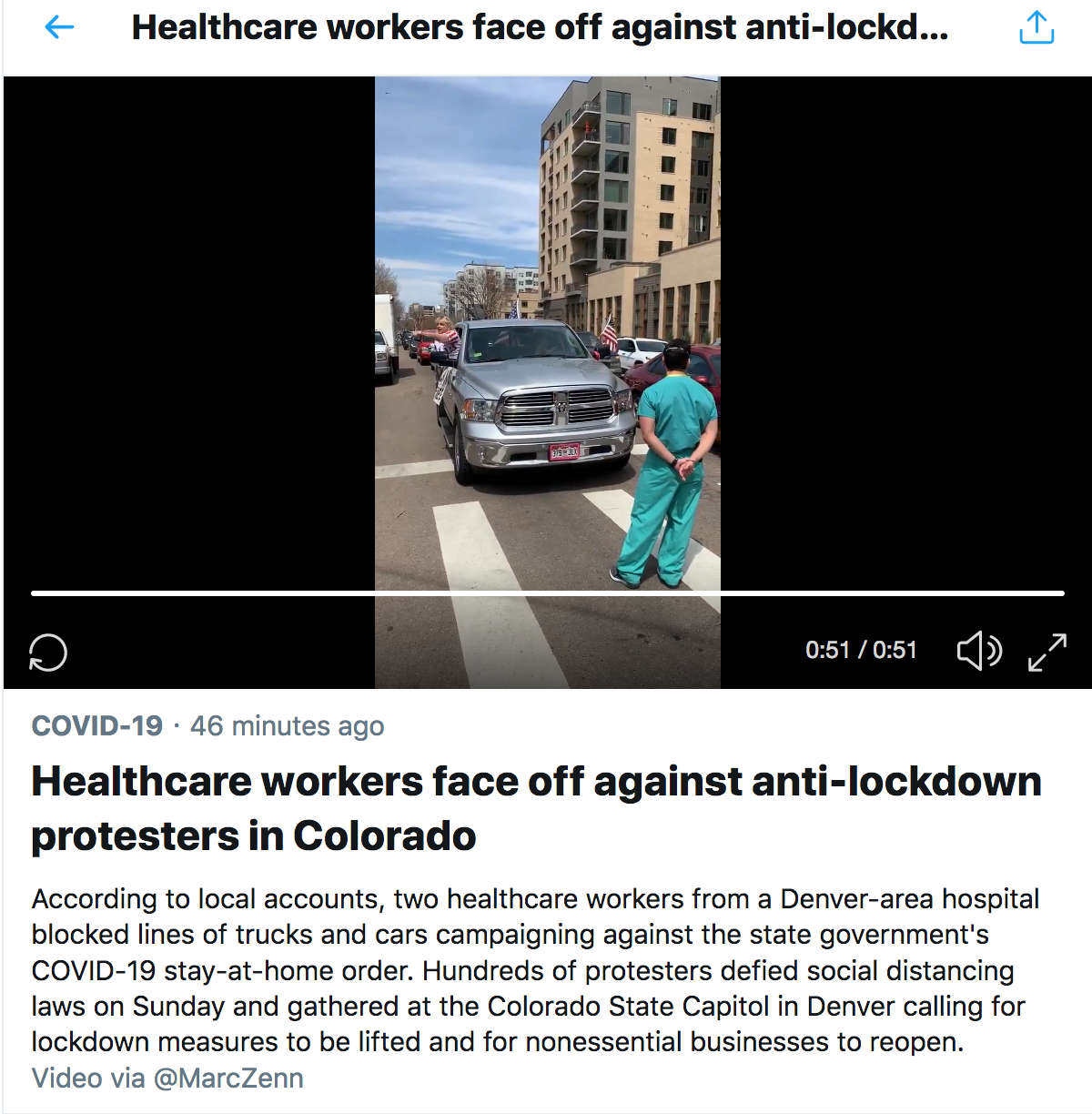

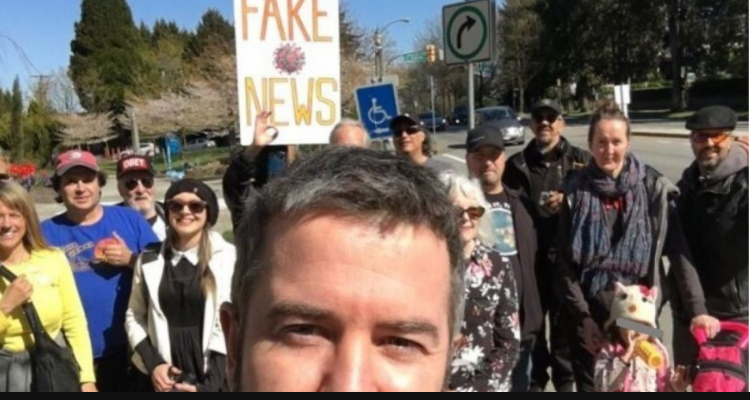

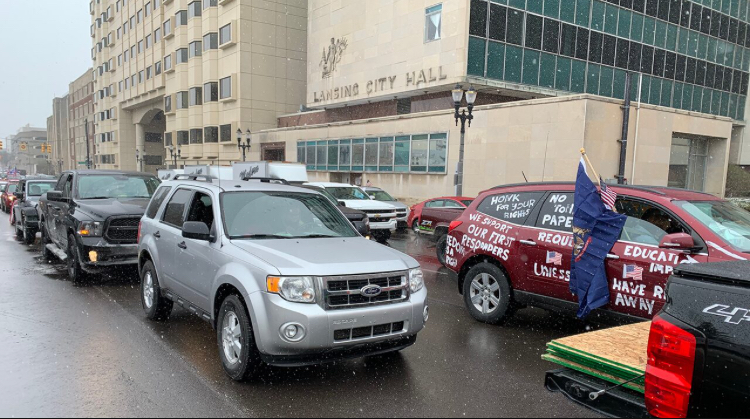

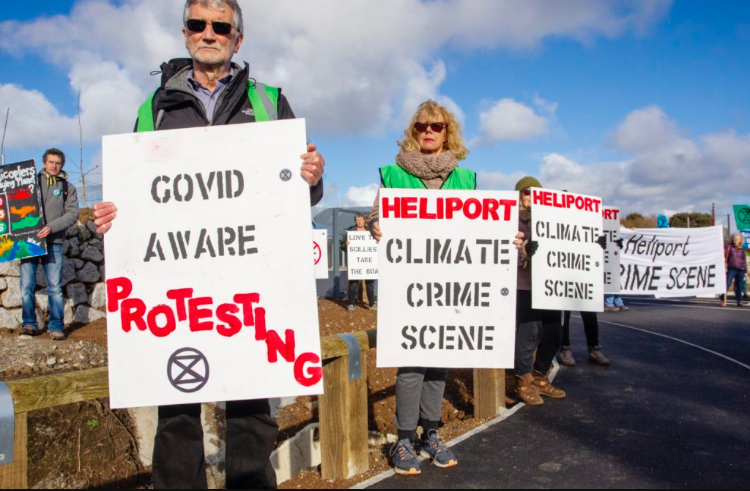
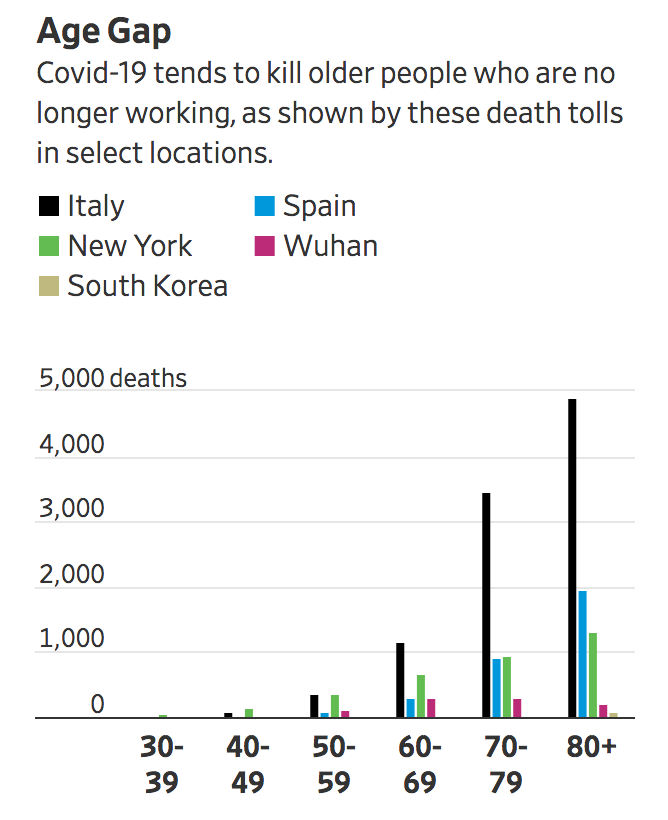
Leave a Reply
You must be logged in to post a comment.